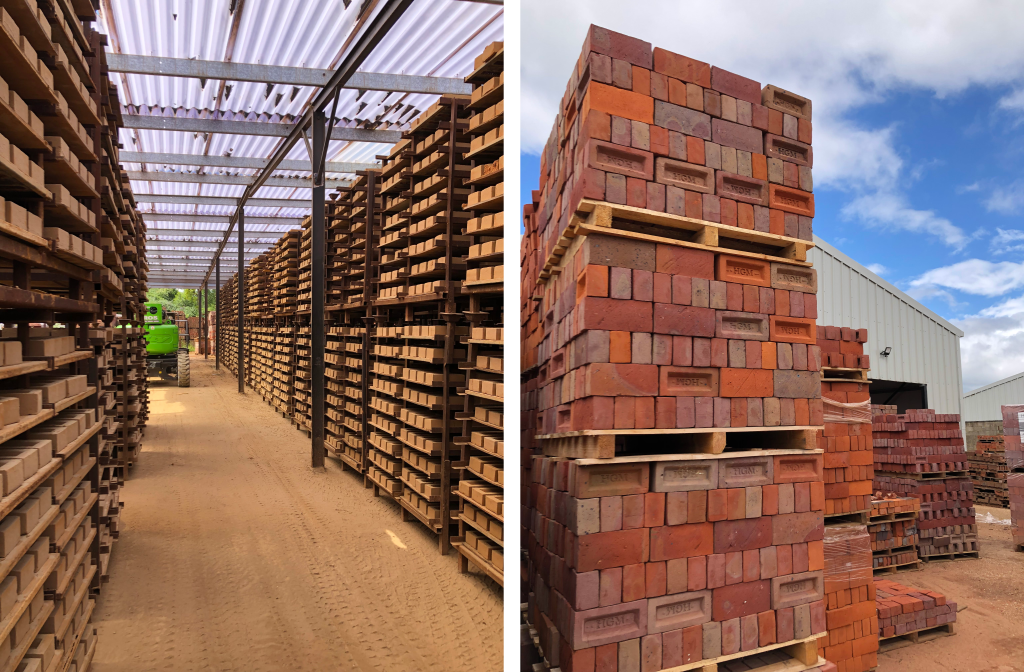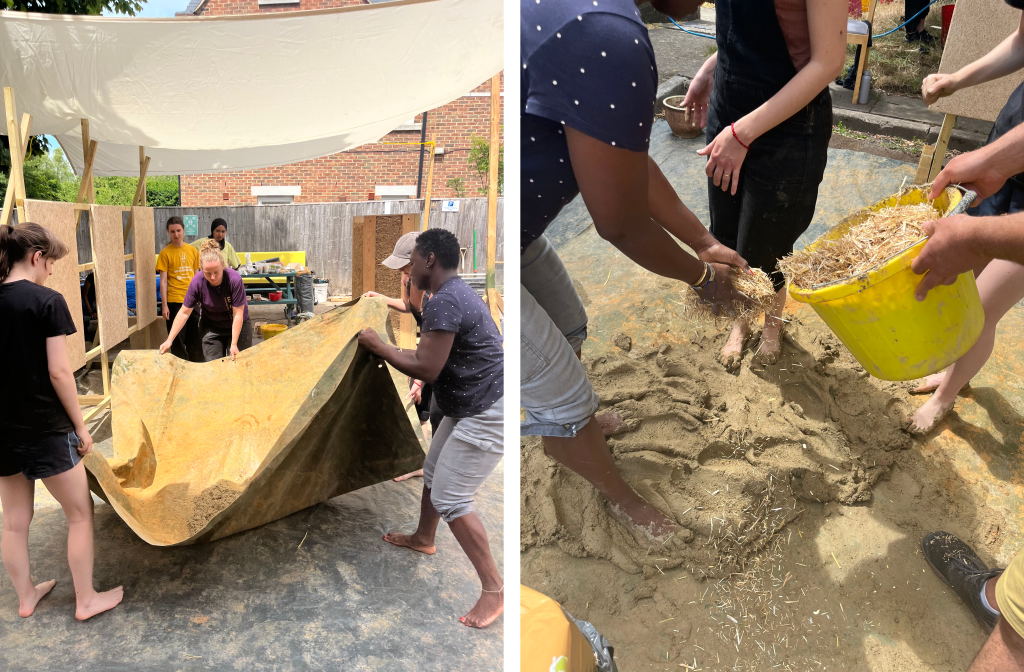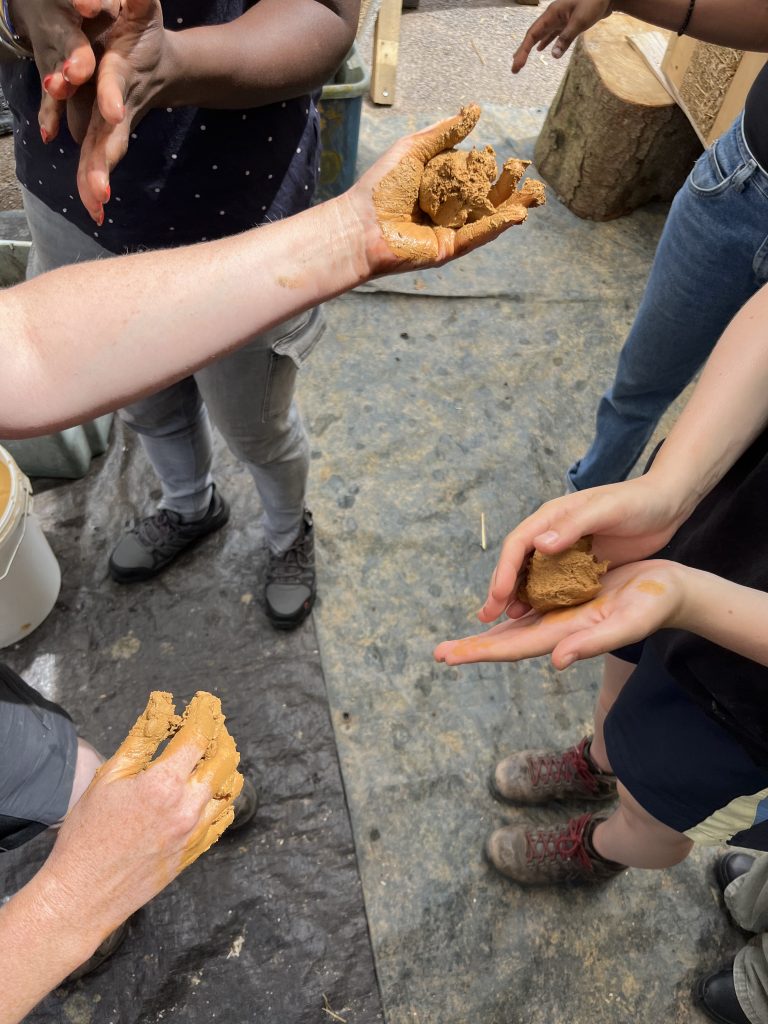Clay is a wonderful natural material that has been used in construction for centuries. At the end of June I was lucky enough to attend a two-day clay workshop with Oxfordshire Community Land Trust in collaboration with Material Cultures as part of the Regenerative Community Building project. I was excited to learn more about this material, especially as it is incredibly compatible with straw bale construction, which is a love of mine (read more about that here). Below, I aim to share with you my newfound knowledge on the practical use and many benefits of clay.
Where can I find some clay?
Clay is found in the ground, so it could be literally under your feet right now. Especially if you check a geological map and it tells you that you are standing in the middle of a clay deposit. Different types of clay can be found in different locations across the UK, and the depth that you will need to dig to reach clay also varies. If you dig in one spot and find there to be no clay, fear not! Just because it’s not there doesn’t mean there won’t be any just a few feet over. It goes without saying, it is imperative to get the landowner’s permission before you do away with all their clay.

We had to get through about a spade’s depth of topsoil before we hit clay.
How do I know if what I have dug up is actually clay?
Aside from looking at the clay and giving it a poke to check if it is smooth and clay-like, there are a variety of tests you can do to assess the clay content in what you have dug. Make sure it is wet enough for a test, and it’s not just failing because it’s a bit too dry.
One of these tests is to roll it into a ball, then into a sausage, and then bend the sausage around your finger. If it cracks and struggles to bend that’s not a good sign, but if it bends smoothly, that is excellent.

Another test is to roll it into a ball, pat it a bit flat onto your palm and hold out your hand, palm facing down. Pump your fingers in and out from your palm; you want to be able to do at least four-ish pumps before it falls off.

What can I do with the clay?
You’ve found some clay, you’re sure it is clay, but what on earth do you do with it now? A bit odd from you to be digging up clay with no reason, but thankfully it has a plethora of different uses in the built environment. You can make bricks, tiles, paint and plaster from clay, and it is an essential component in many other natural building techniques, including cob and adobe.

The clay is all dug within a mile of the site. It is then combined with water, sand and anthracite to create these bricks.
How can I make the clay into plaster?
The clay needs to be soaked in water, and potentially sieved for stones and twigs. Then we need to add two things: a fibre (for tensile strength) and an aggregate (for compressive strength). There are plenty of options for what to use but in the workshop we employed straw as our fibre and sand as the aggregate. See what’s available locally for minimal environmental impact. This all then needs to be mixed with water until it is one cohesive and plastering-ready consistency.

Images thanks to Oxfordshire Community Land Trust and @Ox_EcoUrb.
With the plaster all prepped it can be applied to a wall! For multiple layers it is important to let each dry in between applications.

Images thanks to Oxfordshire Community Land Trust and @Ox_EcoUrb.
Why should I make the clay into plaster (or anything else for that matter)?
Clay is naturally occurring and can (depending on what you’ve mixed it with) return to the ground entirely after it has reached the end of its useful life as a building material. Clay plaster and paint are wonderfully breathable and can help control humidity. Particularly in conjunction with straw construction, it allows bales to breathe and reach their full potential in providing excellent internal air quality. Clay can be a replacement where synthetic materials would typically be used, and therefore reduce the prevalence of these in our built environment.
Firing clay does change its composition so fired bricks will never quite be the same clay again, however bricks and tiles have the handy benefit in that they can be reused in different construction projects, and recycled as aggregate if damaged.
As with all natural material projects, the best thing is always to work with what you have available locally. Maybe you are building a building many miles from any clay; clay is probably not the best choice for you. Maybe you are building right next to or even on a clay deposit; go clay crazy!


